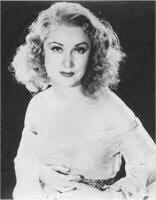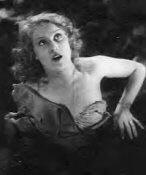In Remembrance: Fay Wray
 Fay Wray,
the actress best known for being the love interest of King Kong in the
groundbreaking 1933 classic has passed away in New York City on Sunday
August 8, 2004. She was 96.
Fay Wray,
the actress best known for being the love interest of King Kong in the
groundbreaking 1933 classic has passed away in New York City on Sunday
August 8, 2004. She was 96.
Born Vina Fay Wray on September 15, 1907 near Cardston in rural Alberta Canada, her family moved to Arizona when she was three. The family later relocated to her mother's hometown of Salt Lake City before settling in Los Angeles. Despite her mother's worries that the movie world was sinful, a teenaged Wray spent time in various casting offices, often landing bit parts in films. She eventually was signed to a $60 a week contract with Hal Roach studios.
Her first big break came in 1928 when she starred as Mitzi, a young girl who is spurned by her lover, a playboy prince, in director Erich von Stroheim's The Wedding March. Stroheim filmed so much during the film's nine months of production that the material was split into two films, Wedding March and The Honeymoon.
Following the release of The Wedding March, Wray found herself headlining several big films in a number of genres during the transition from silent films to talkies. She appeared in The Four Feathers (1929) with Richard Arlen and William Powell, the western The Texan (1930) and the romance One Sunday Afternoon (1933) both with Gary Cooper as well as the horror films Dr. X (1932) and The Mystery Of The Wax Museum (1933).
 |
|
Wray in the clutches of King Kong (1933). |
In 1933, Wray was approached to star in a film with a tall, dark leading man. It was only when she met with Kong producer/director Merian C. Cooper that she discovered her co-star would be a 50 foot gorilla. Still, she took the part. Her contract called for a salary of $10,000.00 for ten weeks worth of production, though shooting would eventually spread over ten months. Although Kong was a stop-motion animated, 18-inch tall miniature model, Wray spent most of her scenes with her co-star suspended off of the studio floor in an eight foot mock up of Kong's hand and arm. (Ironically, the jungle set used for Kong was the same one used for The Most Dangerous Game (1932) which also starred Wray.) The film would go onto be a huge hit and save studio RKO from a looming bankruptcy.
Although Wray appeared in 10 other films in 1933 including Below The Sea with Ralph Belamy and The Bowery with Wallace Beery, it was Kong that was to be remembered most in the public's mind out of any film she worked on her entire career.
"I used to resent King Kong," she remarked in a 1963 interview. "But now I don't fight it anymore. I realize that it is a classic, and I am pleased to be associated with it. Why, only recently an entire issue of a French magazine was devoted to discussing the picture from its artistic, moral and even religious aspects."
Starting in the mid-30s, Wray's career began a bit of decline, with her appearing in more low budget, B pictures. She left the industry in 1942 to marry Robert Riskin, writer of several Frank Capra film's including It Happened One Night (1934) and Mr. Deeds Goes To Town (1936). (She had a previously failed marriage to screenwriter John Monk Saunders.) She returned to acting in 1953 with the adventure film Treasure Of The Golden Condor. She appeared in supporting character roles a handful of films through the end of the decade, mostly motherly types as in Small Town Girl (1953) and Rock, Pretty Baby (1956). She also appeared on several television anthology series such as Studio 57, Kraft Television Theatre and Alfred Hitchcock Present. She played Natalie Woods' mother on the 1953 series Pride Of The Family. Her last film was 1958's Dragstrip Riot. She appeared briefly as herself in the 2003 documentary Broadway: The Golden Age, By The Legends Who Were There.